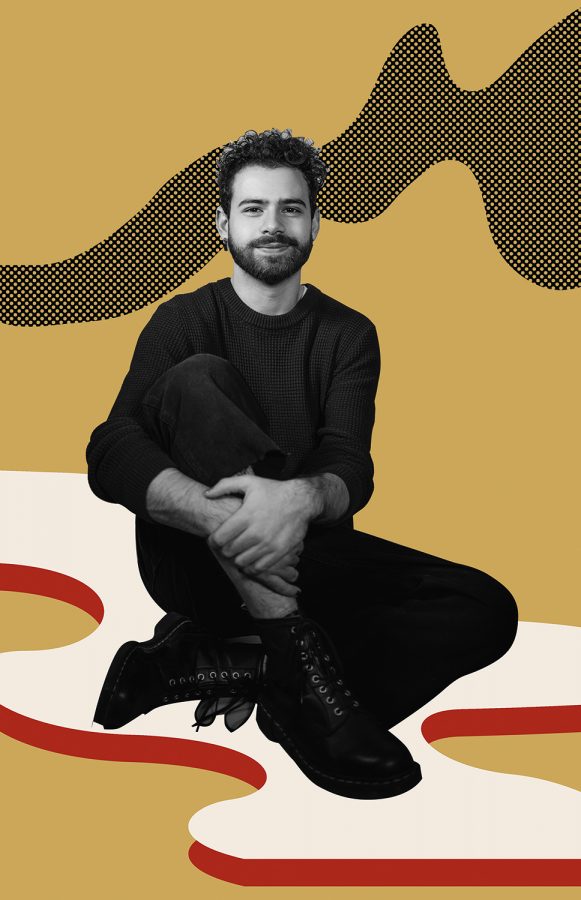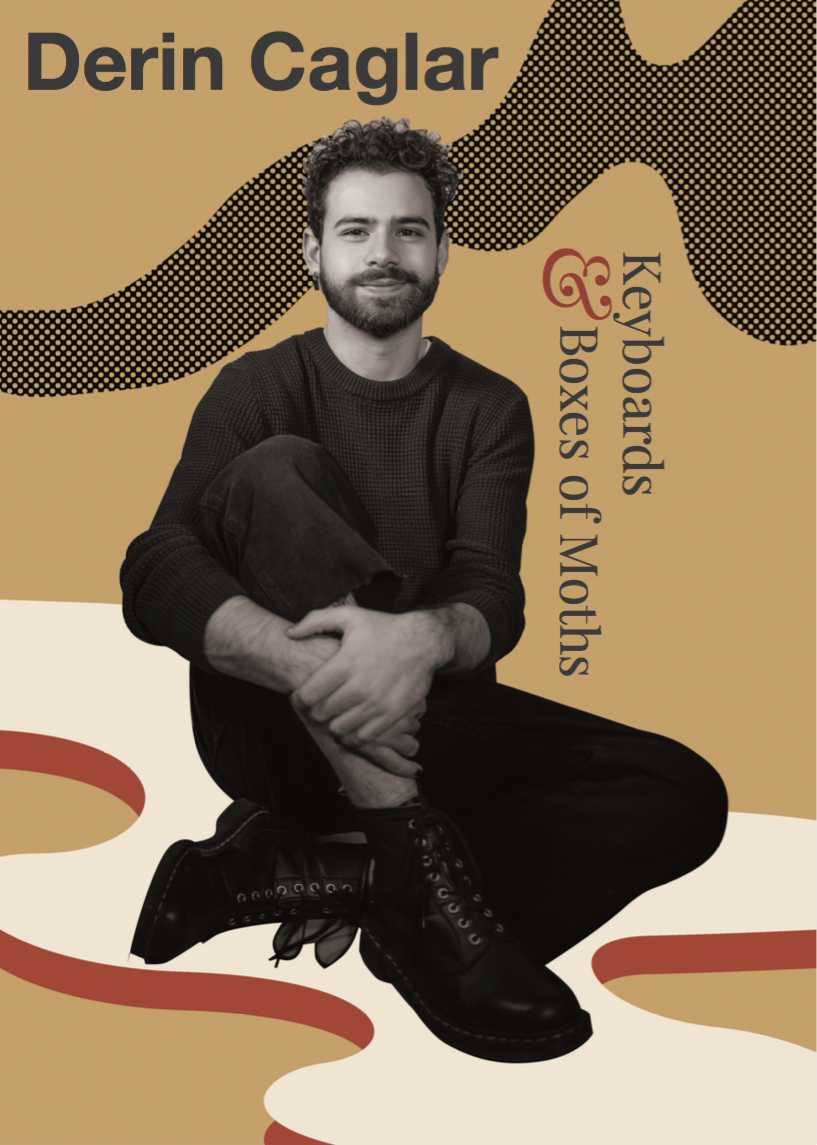
Stepping out of the Pigeonhole and Flying High
By Yasmin Gulec, Under the Arch Editor
In Turkish, sofra is a dinner table set for a meal. It cannot be complete without people around it who share a slice of themselves through their personal stories and moments of intoxicated singing. A cornucopia of dishes usually fills the table and could fill you up even if you just glance at it.
CAS junior Derin Caglar has successfully made a sofra of his own, replacing hungry dinner guests with talented musicians and delicious food with sweet melodies.
Caglar started his music collective Sofra with the intention of making original music. He wanted people to come and create with him, but felt weird asking them to commit by calling it a band — as he was about to make the move from Philadelphia to New York for college.
“It was really more interesting to me to construct something that would be per project,” he said. “It’s hard to get people to commit to stuff, but I want them to be able to take ownership over it.”
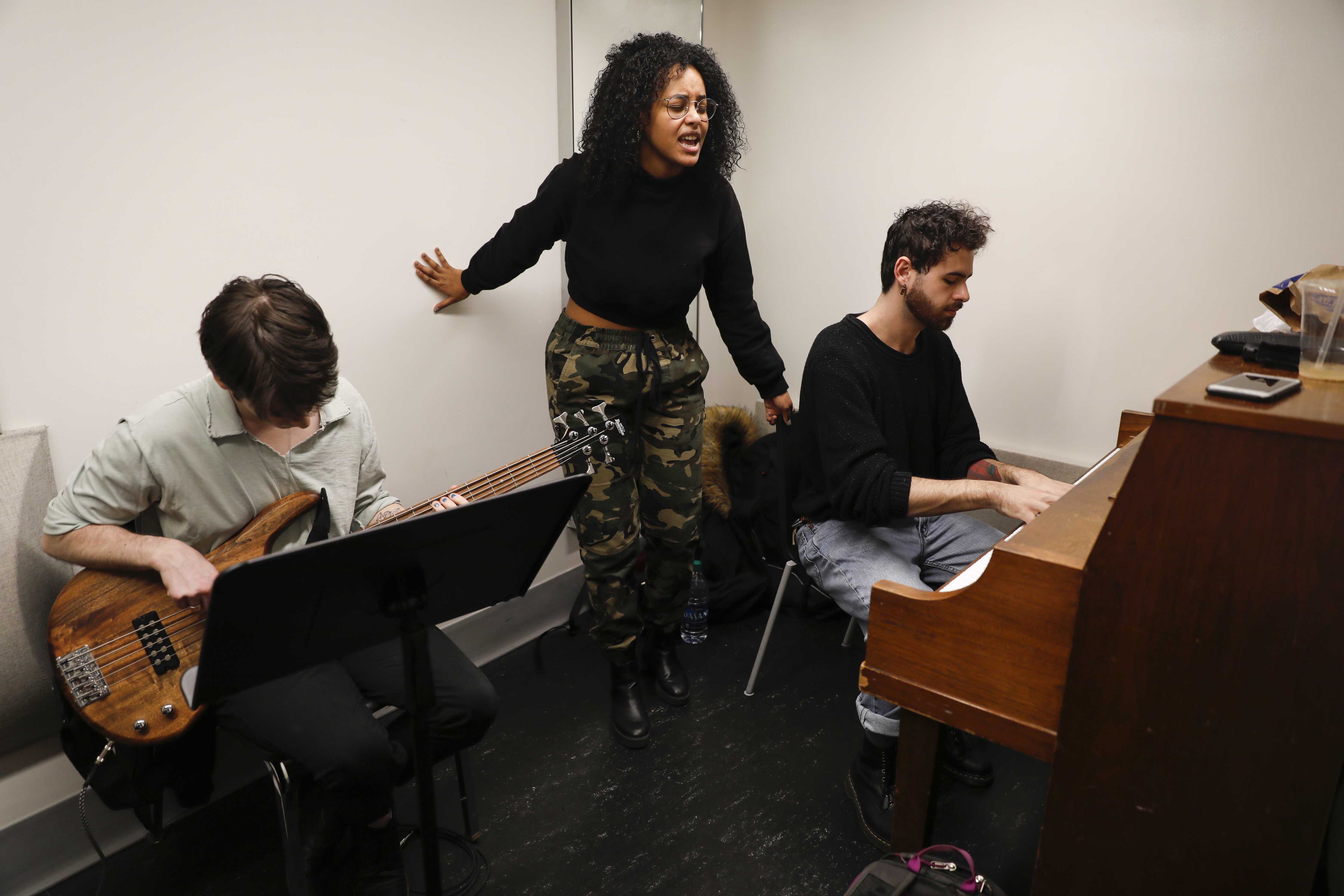
Sofra was born in the heart of Gladwyne, Pennsylvania with a handful of people Caglar met through high school and jazz programs. Since its inception, he has worked with many up and coming musicians like Sterling Duns, Olivia Reid and Peter Enriquez — whose Greenpoint apartment doubles as a fully functioning recording studio where they will record the collective’s next EP.
Caglar wrote a piece for jazz band his senior year of high school that evolved over time, eventually turning into one of the songs on Sofra’s first EP, “Not so Not Familiar.”
His parents moved from Turkey to the U.S. for graduate school and later relocated to Ardmore, Pennsylvania, where Caglar grew up. He got into music at 4 years old, and no, his story does not include a life-changing song or a sad backstory. It does, however, include a legendary lady named Zelda.
After his parents gifted Caglar with a GameCube for what he calls “American Christmas,” he began playing “The Legend of Zelda” all the time, and the songs in the game sparked an interest in him.
“I just remember you’d be in the town and it would sound like a town, or you’d be in the forest and it would sound like a forest,” he said. “I was like, ‘that’s pretty crazy, how did they do that?’”
Caglar did not start listening to non-video game music until the start of middle school. One of the reasons for this, which he says he is still a little “salty” about, is that his parents never made him listen to Turkish music. He says his long-awaited cultural identity crisis has not happened yet, but he wishes that he was exposed to his Turkish side more. Though he is trying to remedy this as an adult, it is difficult, as New York City is not exactly bustling with a rich Turkish music scene.
“My dad gave me — not even Queen or The Beatles, kind of Western culture things that had injected themselves into Turkey,” he said. “He was like, ‘here is Supertramp and the Alan Parsons Project’ — but I totally am so into all that.”
His first introduction to hip-hop was with The Roots’ album “Undun.” In middle school, Caglar immersed himself in the world of jazz, joining jazz band.
When he asked his mom if he could learn an instrument, she told him to choose between piano and guitar. He chose the former, justifying his choice by telling me that there are too many white guitar players in the jazz realm.
“I was just like a little sh-t in middle school,” he said with a laugh. “I was like the fedora kid, so that, combined with the fact that [I was] learning how to play jazz piano, was maybe the most obnoxious combination of things I could do.”
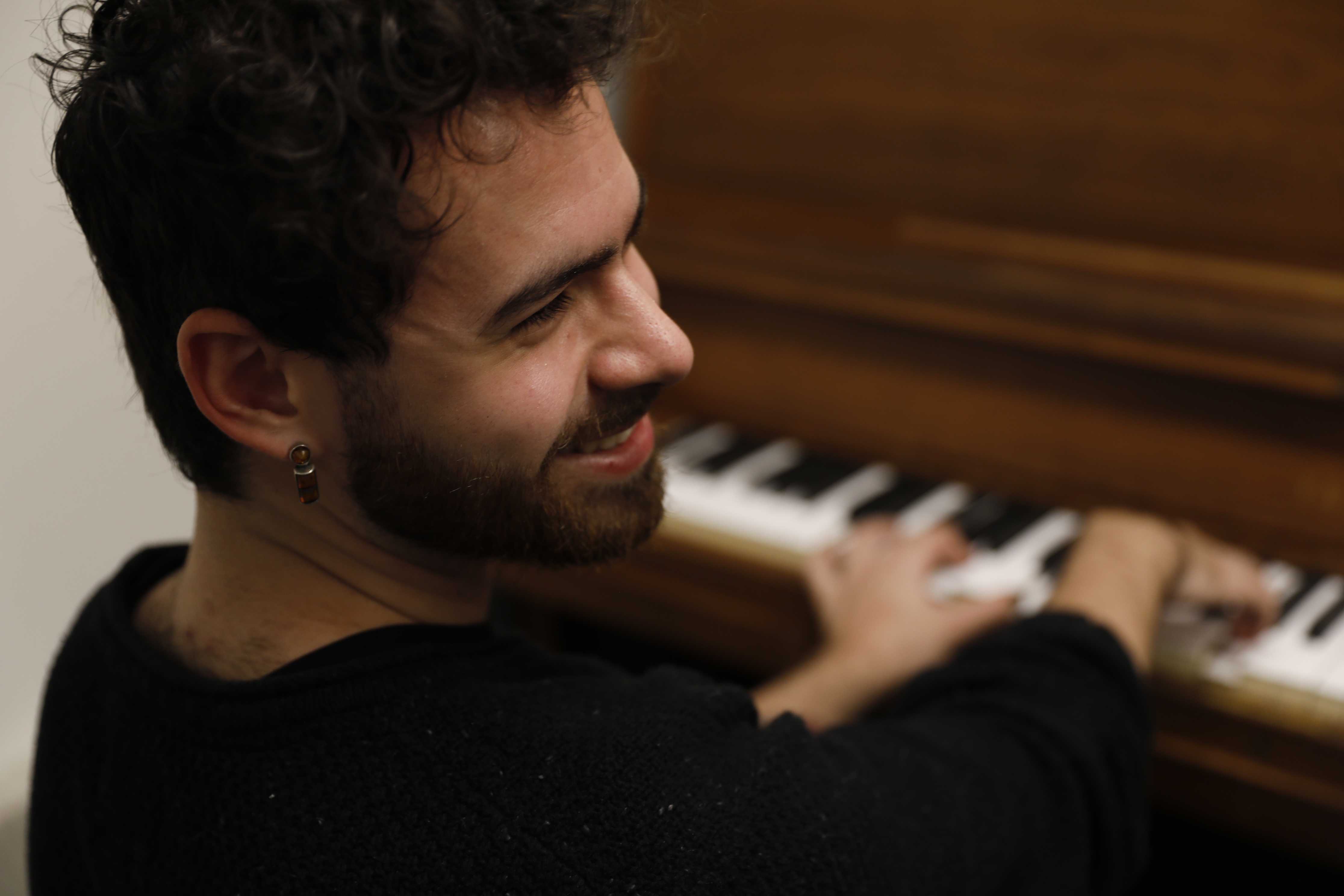
His musical prowess doesn’t end with the keys. He made an impulse keytar purchase inspired by a Herbie Hancock concert, and his aunt gifted him a Ney, an end-blown flute prominent in Middle Eastern music.
“It’s so hard; I could only get like two notes out,” he said.
Caglar also plays the saxophone, which he jokingly asked me to keep “between us.”
Caglar finds musical reassurance in the people he works with, occasionally turning to them to see if he is headed in the right direction. This, he says, has been an integral developmental step — he used to feel extremely jealous of people who were better than him.
“It’s such a shift of perspective to be around people that are better than me but who want to play with me,” he shared, looking down at his painted, blue nails. “That probably has had the biggest shift, positive critical influence.”
Peter Enriquez, a Sofra collaborator and close friend of Caglar, said the tracks are not made to please anyone else. It is Caglar’s attempt at telling a story, something meant to be engaged with.
“He didn’t write that record to sound like jazz or sound like hip-hop or sound like R&B,” Enriquez said. “He wrote that music because that’s what was most honest to him, and the record itself as a result is at times chaotic, at times silly, at times smooth and at times aggressive and much more.”
Enriquez said Caglar downplays his musical abilities, as he hates being the center of attention.
“He’s unbelievably humble and is truly a radiant talent,” Enriquez said. “His musical choices and endeavors are beautiful because they’re never self-serving. Every note he plays and every piece he writes is for the sake of making something beautiful, something that is meant to be communicative and interactive. And aside of all of this, he is simply very, very good at playing the piano.”
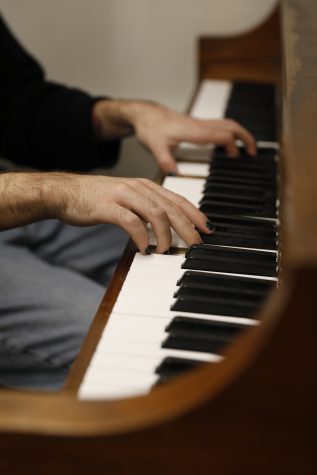
Outside of Sofra, Caglar plays the keyboard for Haiku and Mia Gladstone, is in the process of co-producing the Synapse — a neuroscience podcast — and writes film scores for student short films.
When I tell him that I am going to ask him a dumb question, he anticipates it, guessing “What is my process?” I nod.
Caglar usually messes around at home until he comes across an idea he likes, or sometimes he writes songs with specific people in mind. There is also a recurring melodic theme.
“I’m also obsessed with the ‘Sesame Street’ theme song,” he said. “I think this sh-t is so high. It’s so good. It slaps so hard. I have like four versions for arrangements of that because I can’t get enough of it.”
Occasionally, Caglar will try to take sounds he hears around him and reinterpret them in a musical context.
“‘The Desert Rejoices,’ which is the third track of the album, I just started with the rhythm [of a] cicada,” he said, imitating the insect’s sounds. “I took that idea and just did that back to back and then eventually that became that song.”
Including the cicadas was not random, as Caglar is very interested in bugs. (“Yay bugs,” he says when I ask about how this interest started.) Caglar got into bugs because his high school botany teacher is an expert on the North American Emerald Moth. He put him in contact with the curatorial manager of the entomology department at the Academy of Natural Sciences in Philadelphia who made Caglar identify boxes of moths 10 hours a week for three months. This was followed by a five-day trip to Arizona to do field collecting.
“You set up sheets, take a thousand-watt mercury vapor light bulbs and put them in front and then some UV just for, you know, species that are into that, and then you wait,” he said. “Not only does the sheet gets swarmed, but you get swarmed. You have to tuck everything in. There [are] bugs all over, and then you just collect.”
Contrary to what might be expected of him with his background in music, he is a neuroscience major. (He calls it a “sexy new science.”) Jennifer Punt, Caglar’s high school advanced biology teacher and an immunologist, says that he has an intense interest in biology and neuroscience as a means of understanding how and why things work.
“He brings the imagination of an artist to a field that some think is driven simply by adherence to fact,” she said. “He, however, sees the art in science — an essential part of both discovery and communication.”
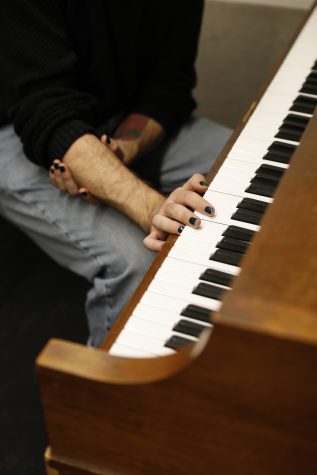
As his competitive disposition is moderate at best, Caglar did not think studying music was the best option for him.
“The thing with music is, if you have the people around you — which is a privilege — you have the connections, and if you practice you don’t have to go to school for it,” he shared, his amber earrings gifted to him by his mom dangling off his ears. “I owe that to other people here, so it’s just nice to owe it to friends and not to an institution. ”
In the near future, Caglar hopes to find research opportunities in New York City so he is not far away from the music scene.
“Grad school, at least a master’s, maybe a Ph.D.,” he says. “I think my ideal currently is to land a job at the American Museum of Natural History and just work there indefinitely and live here, do music and die happy. Which isn’t the most unattainable thing, so we will see.”
When I imagine Caglar as a dish featured on a “sofra,” I tell him that he would be aşure, a traditional Turkish dessert made with sugar, wheat, beans, currant, oranges, pistachio and chickpeas that tastes great despite the array of ingredients. He laughs, saying he would prefer being a Turkish almond-based pudding, keşkül, but I stop him.
“Look, think about it,” I said. “Aşure has peas and weird vegetables, but also sweets and fruit. You do not have to pick one specific thing — you can put everything together and it can still work out. That is exactly what you are doing.”
In true aşure form, Caglar does not understand people’s tendency to compartmentalize beyond what is necessary.
“It’s confusing in a way that I feel like it doesn’t have to be,” he says. “It’s like I’m just trying to do the things I want to do. You know, combining disciplinary stuff hasn’t killed me yet.”
Yet.
Email Yasmin Gulec at [email protected]. A version of this article appears in the Thursday, March 14, 2019, print edition on Pages 12 and 13. Read more from Washington Square News’ “Up-and-Comers 2019.”


























































































































































